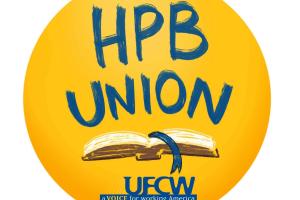After missing the month of May, the workers' committee for Half Price Books Minnesota returned to the bargaining table on June 21, 22, and 23.
Since the committees have not met since April, some of the discussion was in response to topics from April. The Employer and committee discussed their opinions on how the grievance procedure should work and how seniority should be applied, but no agreement has been reached on those topics yet. However, some progress was made. The two sides also got closer to an agreement on a couple items including the role of the steward, how employee lists will be sent to the Union, and limits on temporary employees.
The two sides also had a productive discussion on the concept of a Labor-Management Committee. The Employer was initially hesitant to discuss the concept, but they did present a proposal that the workers could meet with management to discuss issues. That is part of what the workers need, but the members of the committee were able to share compelling and passionate arguments in favor of a committee to improve communication between workers and the company, and to give the company the opportunity to hear ideas from workers.
Read the Union committee's latest proposal on a Labor-Management Committee here! (Note- this has not been agreed to by the parties, this is what the Union is proposing as of the end of this bargaining session)
Read the full list of tentative agreements so far here! (Workers will vote on the finished contract)
What is a Labor-Management Committee?
From the Federal Mediation and Conciliation Service: "The labor-management committee is not a substitute for the grievance procedure or contract negotiations. But it can contribute to making both more effective forums for constructive resolution of disputes. As such, the labor-management committee can develop into a significant factor in improving the labor relations climate in organizations. From a practical standpoint, both labor and management want to know why they should shift from an adversary position to one of mutual cooperation.
What’s in it for Management? A forum to review business conditions, quality problems, product development, customer requirements and other related matters that demonstrate the relationship of the employees’ role in the success or failure of the business. An opportunity for advance discussion of operational problems, planning and scheduling, and other matters that have potential impact on employee work schedules, overtime scheduling, layoffs, recalls, temporary transfers or new job opportunities. An open channel of communication for top management to establish rapport with the union committee without becoming bogged down in day-to-day labor relations problems, including grievances. An opportunity for management to be responsive to constructive suggestions and valid complaints, demonstrating to the union and employees that management is sincerely interested in improving the workplace. A means of communicating with employees through their elected leaders.
What’s in it for Labor? A channel of communication to top management. A chance for input on operational problems and management plans that affect employees’ work schedules, job assignments and working conditions. An avenue to express employee complaints that lie outside the normal grievance procedure. An opportunity to resolve minor problems before they become significant grievances. Recognition, by management, of the union as a responsible organization with a constructive role beyond that of simply processing grievances. A means of strengthening communications with the membership."

